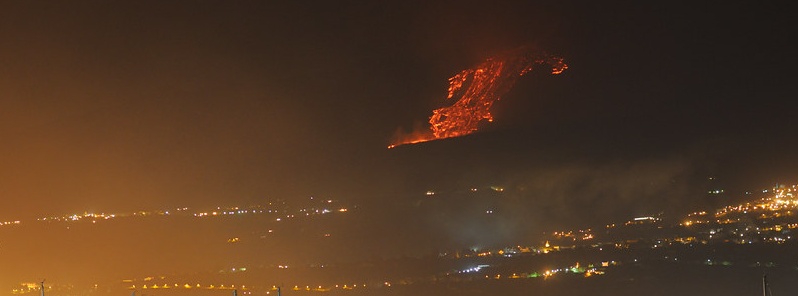‘Crystal clocks’ help with volcanic hazard management and better forecasting volcanic eruptions

Researchers from Cambridge University have devised a way to calculate the duration of the magma which can be stored in the deepest portion of the volcanic systems. They have accomplished this by making use of volcanic minerals known as 'crystal clocks'. This is the first estimation of the magma storage times in close proximity to the Earth's crust and the mantle known as Moho. The Science journal has reported this aspect.
"This is like geological detective work," said Dr. Euan Mutch from Cambridge's Department of Earth Sciences, and the paper's first author.
"By studying what we see in the rocks to reconstruct what the eruption was like, we can also know what kind of conditions the magma is stored in, but it's difficult to understand what's happening in the deeper parts of volcanic systems."
"Determining how long magma can be stored in the Earth's crust can help improve models of the processes that trigger volcanic eruptions," said co-author Dr. John Maclennan, also from the Department of Earth Sciences. "The speed of magma rise and storage is tightly linked to the transfer of heat and chemicals in the crust of volcanic regions, which is important for geothermal power and the release of volcanic gases to the atmosphere."
The researchers went a step further in their research and analyzed the Borgarhraun eruption of the Theistareykir volcano in northern Iceland which took place some 10,000 years ago. This was taken from the Moho. The most pivotal aspect is that the boundary region plays a key role in the processing of melts when they move from their source regions in the mantle to the surface of the earth.
The 'crystal clock' assumed immense significance as it was utilized to calculate the duration of the magma stored at the boundary region. A volcanic mineral called spinel was used whose shape was similar to a stopwatch. The 'crystal clock' way proves to be very useful as it was used by the researchers to model how the spinel crystals altered with time while the magma was stored. They observed the specific diffusion rates of chromium and aluminum inside the crystals. They came to know how these elements are 'zoned'.
"Diffusion of elements works to get the crystal into chemical equilibrium with its surroundings," said Maclennan. "If we know how fast they diffuse we can figure out how long the minerals were stored in the magma."
The researchers went further in their study to find something exciting regarding the magma storage time. They observed how chromium and aluminum were zoned in crystals and this was a new discovery regarding the magma storage time. The past laboratory experiments were utilized for the estimation of the diffusion rates.
Another way was devised by the researchers and it was about amalgamating finite element modeling and Bayesian nested sampling in order to know about the storage timescales.
"We now have really good estimates in terms of where the magma comes from in terms of depth," said Mutch. "No one’s ever gotten this kind of timescale information from the deeper crust."
It has proved significant for the researchers to ascertain how magma can be moved to the surface. The researchers have mentioned that is just similar to a 'volcanic plumbing system' extending through the crust with little 'spouts'. Here magma can be easily moved to the surface.
Second research conducted by a similar team was just published in Nature Geoscience, found that there is a deep association between the magma ascent and CO2 release. This has some issues for volcano monitoring.
According to the researchers, ample Carbon dioxide was moved from the magma into gas for some days prior to the eruption to exhibit that monitoring of Carbon dioxide can prove to immensely useful in spotting the precursors to eruptions in Iceland. The researchers discovered that magma can elevate from a chamber 20 km (12.4 miles) deep to the surface in just 4 days.
So the molten rock that feeds the volcanoes can help a great deal in the management of volcanic activity when eruptions occur.
References:
- Euan J.F. Mutch et al. ‘Millennial storage of near-Moho magma.’ Science (2019). DOI: 10.1126/science.aax4092
- Euan J.F. Mutch et al. ‘Rapid transcrustal magma movement under Iceland.’ Nature Geoscience (2019). DOI: 10.1038/s41561-019-0376-9
Featured image credit: Gnuckx

Commenting rules and guidelines
We value the thoughts and opinions of our readers and welcome healthy discussions on our website. In order to maintain a respectful and positive community, we ask that all commenters follow these rules.